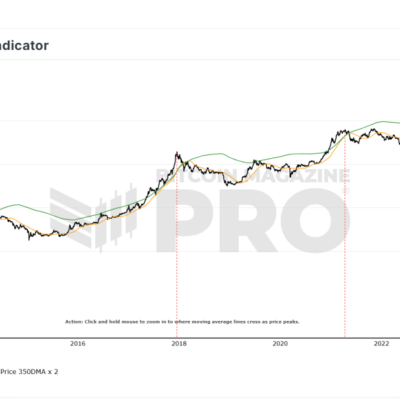Rust and corrosion have long been a challenge for industries, leading to equipment degradation, structural weakness, and increased maintenance costs. Traditional cleaning methods—such as sandblasting, chemical stripping, and abrasive brushing—have been used for decades but often come with unwanted drawbacks, including surface damage and environmental concerns.
This is where laser cleaning technology comes in as a revolutionary alternative. By offering precise, efficient, and eco-friendly rust removal, laser cleaning has become the go-to solution for a range of industries, from automotive and aerospace to manufacturing and heritage conservation. Discover the benefits of this cutting-edge technology with RenovateRX’s Rust-Free Laser Cleaning Solutions and learn how it can transform your surface treatment process.
What is Rust-Free Laser Cleaning?
Laser cleaning, often referred to as laser ablation, uses concentrated laser pulses to remove rust, paint, dirt, and other contaminants from a variety of surfaces. The process works by directing a laser beam onto the affected area, causing the rust or unwanted material to heat up and vaporize, leaving a clean, rust-free surface behind.
The laser can be adjusted to target specific layers, making it ideal for precision cleaning without damaging the underlying material. This makes laser technology a game-changer in industries where maintaining surface integrity is crucial, such as heritage restoration, electronics manufacturing, and even automotive restoration.
Why Choose Laser Cleaning Over Traditional Methods?
Non-Destructive Cleaning: Unlike abrasive techniques, which can wear down the material, laser cleaning is non-contact and non-abrasive. It selectively removes contaminants without causing any harm to the surface below, preserving the structural integrity of delicate components.
Eco-Friendly Solution: Traditional cleaning methods often use chemicals and produce waste materials that can harm the environment. Laser cleaning, on the other hand, produces no harmful waste, making it a green and sustainable alternative for environmentally conscious industries.
Precision and Control: The parameters of the laser beam—such as intensity, wavelength, and pulse duration—can be easily adjusted to target specific contaminants. This precision allows for selective cleaning, which is especially useful in applications like removing paint from heritage structures or preparing parts for welding.
Cost Efficiency Over Time: While the initial investment in laser equipment may be higher, the long-term savings are significant. Laser cleaning systems require minimal maintenance and reduce labor costs, making it a cost-effective solution for large-scale operations.
Automation and Safety: Laser cleaning can be easily integrated into automated systems, allowing for consistent results with minimal human intervention. Additionally, since the process produces no harmful dust or fumes, it is safer for operators compared to chemical or abrasive methods.
How Does Rust-Free Laser Cleaning Work?
The laser cleaning process starts by directing a laser beam onto the contaminated surface. The energy from the laser is absorbed by the rust or paint layer, causing it to rapidly heat up and evaporate, or it’s blown away by a secondary effect known as “plasma ablation.” This leaves behind a clean, rust-free surface, ready for further treatment or use.
The process can be tailored to suit different materials and surface conditions. For example:
Low-Power Settings: Ideal for delicate surfaces, such as historic artifacts or thin metals, where precision is essential.
High-Power Settings: Used for removing thick layers of rust or industrial coatings from large metal components.
Applications of Laser Cleaning
Laser cleaning is a versatile technology with a broad range of applications, making it the preferred choice for industries looking to upgrade their maintenance and restoration processes:
Automotive Industry: Laser technology is used to clean car bodies, engine components, and to restore vintage vehicles. The precision ensures that the integrity of the parts is maintained while achieving a clean, rust-free surface.
Aerospace and Defense: Ideal for removing oxidation, coatings, and residues from sensitive components without compromising their structural properties.
Manufacturing and Fabrication: Laser cleaning can prepare metal surfaces for welding or bonding, ensuring a cleaner and stronger finish.
Art and Heritage Conservation: Museums and conservators use laser cleaning to safely restore delicate artifacts, sculptures, and paintings without damaging the original material.
Electronics Industry: Laser cleaning is used to clean sensitive parts and components in electronic devices, offering a high level of precision without causing electrostatic damage.
Why Rust-Free Laser Cleaning is the Future
Traditional rust removal and surface cleaning methods have several disadvantages, including the potential for surface damage, the use of hazardous chemicals, and the generation of secondary waste. Rust-free laser cleaning technology, on the other hand, offers a unique combination of efficiency, safety, and environmental benefits.
No Residue: Laser cleaning is a residue-free process, meaning there’s no need for post-cleaning treatment.
Minimal Waste: No use of water, chemicals, or abrasives, reducing waste and environmental impact.
Scalable Solutions: From handheld devices for small-scale cleaning to large automated systems for industrial use, laser cleaning can be scaled to meet the needs of various industries.
Final Thoughts
As industries continue to move towards more sustainable and efficient cleaning solutions, laser technology stands out as a leader in innovation. The rust-free laser cleaning solutions provided by RenovateRX are setting new standards for surface treatment, offering unparalleled precision, efficiency, and environmental benefits.
Ready to upgrade your surface cleaning process? Discover how laser cleaning technology can transform your maintenance and restoration needs. Visit RenovateRX to explore the future of rust-free cleaning today!




